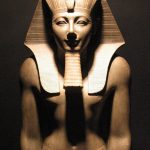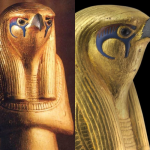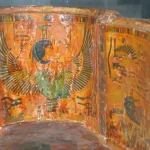Head of the god Amun
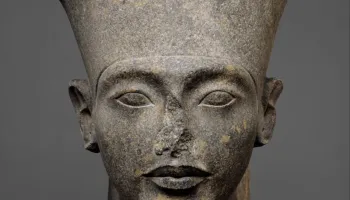
New Kingdom, Post-Amarna Period
ca. 1336–1327 B.C.
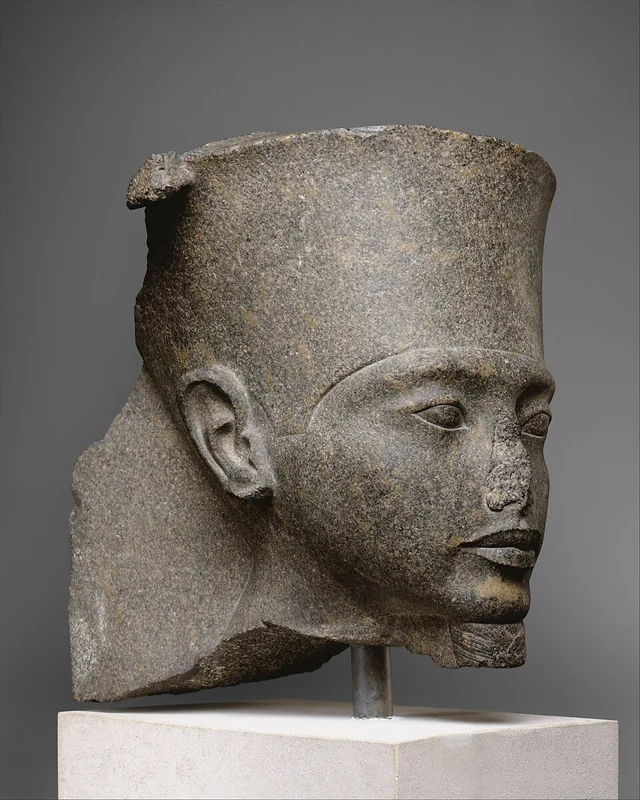
The braided beard and flat cap, once adorned with double plumes, identify this figure as the god Amun. His small eyes, set apart by a curved depression beneath the rounded brow ridge, accompany a broad face with sharply contoured lips and a slightly drooping chin when viewed in profile. These traits closely resemble the features of King Tutankhamun, indicating that the piece was commissioned under his reign.
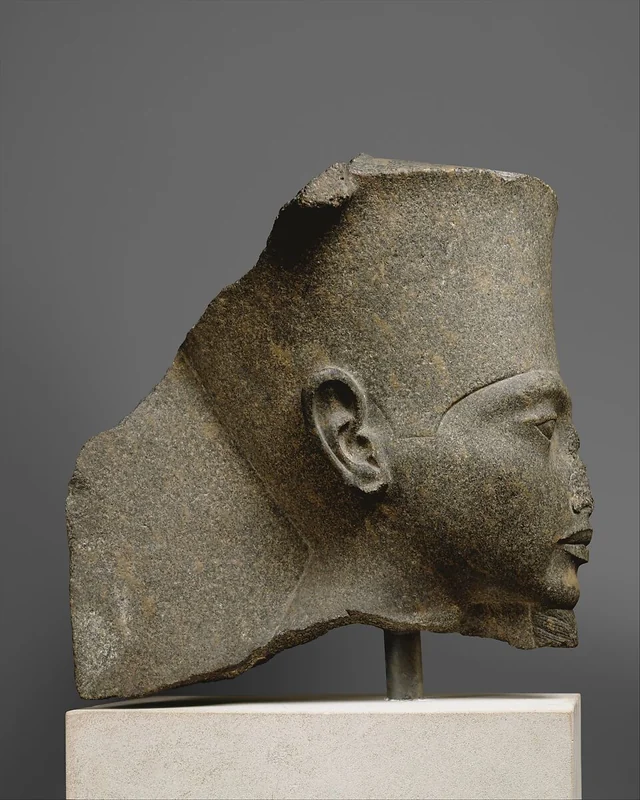
The sculpture was almost certainly intended for Karnak, Amun’s great temple at Thebes, as part of Tutankhamun’s program to restore the god’s monuments that had been damaged or destroyed during Akhenaten’s rule. While many surviving works depict Amun placing his hand on Tutankhamun’s crown as the king kneels or stands before him, the large scale of this head suggests it originally belonged to a monumental freestanding or seated statue of the god himself.
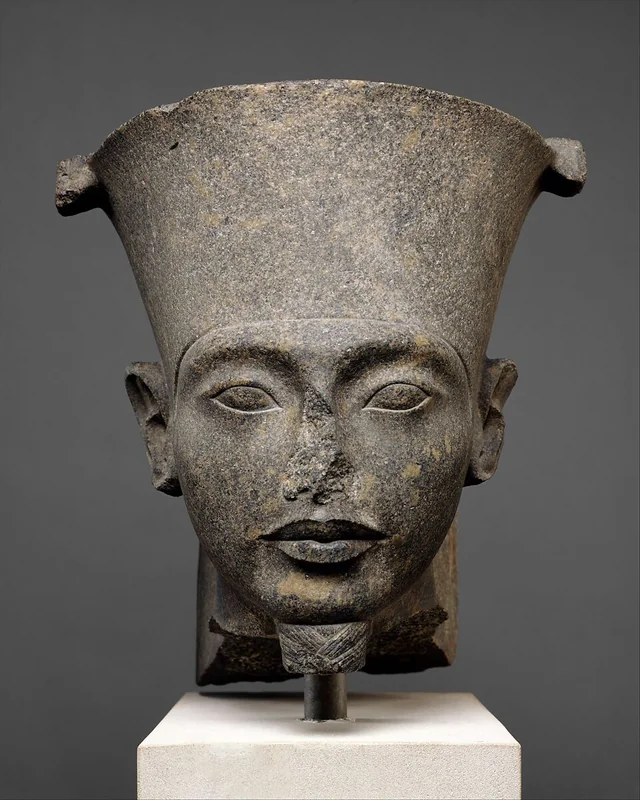
Stylistically, the piece reveals the lingering influence of late Amarna art, suggesting that artisans from Amarna were active in Thebes during Tutankhamun’s reign. The sensuous modeling of the mouth contrasts with the distant, veiled gaze of the small eyes beneath heavy brows, creating a deliberate tension. As in late Amarna works—and reminiscent of similar effects in late Middle Kingdom portraiture—these features likely aimed to convey a sense of inner life and introspection.
Reign: Tutankhamun
Date: ca. 1336–1327 B.C.
Provenance: Probably Thebes, Upper Egypt
Material: Granodiorite

